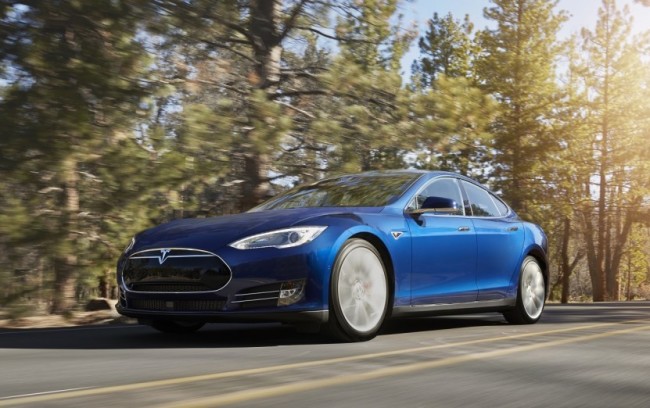Unless you’ve been living under a rock the past week, you’ve undoubtedly heard or read about Elon Musk’s newest Powerwall Home Battery and Backup System. The Powerwall Home Battery and Backup System technology isn’t automotive specific but you can bet like the Model S, a sign of the future to come and will undoubtedly trickle down to automotive applications in some form or another in the near future.
The basic principle of the Tesla Powerwall Home Battery is an advanced form of harnessing and utilizing solar energy. The Powerwall system stores excess solar energy from your home’s solar panels during the day, so you can use it later in the evening when energy costs from the grid are higher due to peak hour usage. The new technology is part of Tesla’s company mission to support the progressive zero emission power generation. The system is supposedly easy to install, fully automated, and requires zero maintenance. It mounts to the wall and uses a liquid thermal control system. Even if you don’t have solar cells, the Powerwall can charge up overnight when energy rates are lower, then run your home on that cheaper electricity during the day.
People who currently own a Tesla Model S are familiar with the lithium-ion battery technology as its identical to the system in their Model S. It’s guaranteed for ten years and the you can buy either a 7kW capacity or a 10kW capacity.
Power from the battery ranges from 2.0 kW to a peak of 3.3 kW. The smaller battery is optimized for daily use cycles. This output isn’t nearly high enough to power most North American homes solely, but the larger Powerwall is enough for backup use in case the main power grid were to suddenly go down. In addition to home usage, Tesla is also promoting the Powerwall for businesses that need a reliable power source, and notes that multiple batteries can be employed together for greater backup or energy storage needs.
It’s no secret that most Tesla owners are die-hard fans of electric tech, and the Powerwall is yet another way people can buy into that all-important-to-them zero-emissions lifestyle. A huge part of the appeal of the Tesla Model S EV, aside from the fuel savings and driving experience, is the lower reliance on fossil fuels and the feel-good vibe associated with leaving as small a footprint as possible. Now, with the new Powerwall tech, it’s possible for a Tesla Model S owner to plug their car into their personal Powerwall system in the evening, and recharge the battery completely on solar energy harvested during the day and stored in Tesla’s own battery. This is most definitely a win-win.
If you want one of these systems, it’ll cost you US$3,000 for the 7kW Tesla Powerwall or US$4,000 for the larger 10-kW unit. You can reserve your Powerwall now on Tesla’s website, with deliveries expected to begin this summer.
It’s going to be pretty awesome to be driving around in supercar EVs requiring zero fill-ups in the foreseeable future (disclaimer: this is my opinion on our future, not fact, obviously).












